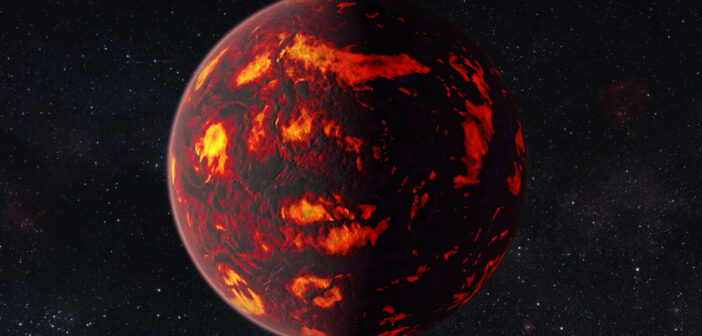Imagine standing on a small rock, surrounded on all sides by a sea of boiling lava. Above you, an enormous star looms across most of the sky. Take a deep breath in: what do you smell, what’s in the air? While no humans have yet been in this situation, astronomers are making progress towards answering this question using instruments back here on Earth.
Worlds Beyond Imaginings
Ours is an era of wonder, one in which we are just beginning to discover planets beyond our own solar system and just beginning to realize how strange these worlds can be. Exoplanet astronomers have confirmed that over the years, science fiction writers largely underestimated the universe: included in the menagerie of the first discovered 5,000 planets are worlds with not one, or two, but three stars; planets that are fluffier than cotton candy; and planets where the clouds are made of rock. Each of these worlds offers the chance to contextualize our own home and to study how our galaxy creates and maintains planets.
One extreme and somewhat famous exoplanet discovered back in 2004 is named 55 Cancri e. In some ways, this world might remind us of our own. It’s a little bigger than Earth (it has a radius about twice as large), and it’s also likely rocky, with a bulk density a little higher than the terrestrial value. The comparisons to our home world abruptly end, however, when we consider where the planet is: it nearly skims the surface of its host star, whipping around it on an orbit that takes only about 17 hours. It is so close that were you to stand on the surface of the planet, the star would dominate your view of the sky. Also, you’d likely be standing in lava, since the ambient temperature is high enough to melt the upper crust.
Astronomers have been understandably fascinated with this molten world, and over the past 20 years numerous groups have labored to characterize it. Unfortunately, it is difficult to measure something as small as a planet from 41 light-years away — current estimates of the surface pressure range from a near-Earth-like 1.4 bar all the way to the pressures felt more than a mile undersea. Even so, progress has been made, and the latest step came recently from the first analysis of 55 Cancri e’s emission spectrum using a high-resolution instrument.
New Observations

One of the high-res spectra collected by MAROON-X of 55 Cancri. The black lines mark the borders between different echelle orders. [Rasmussen et al. 2023]

The actual data (right), an injection of what an iron signature was expected to look like (middle), and an injection of an iron signal 10x stronger than expected (left). Only a very weak signal was recovered in the real data, which implies that there is very little iron present. [Rasmussen et al. 2023]
Citation
“A Nondetection of Iron in the First High-resolution Emission Study of the Lava Planet 55 Cnc e,” Kaitlin C. Rasmussen et al. 2023 AJ 166 155. doi:10.3847/1538-3881/acf28e
